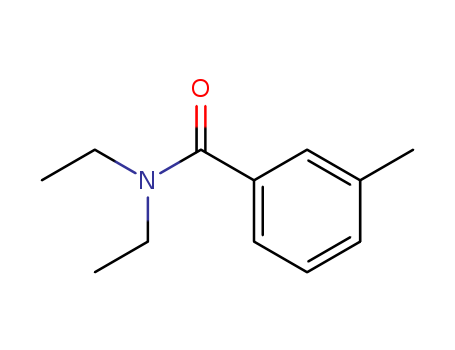- Chemical Name:Diethyltoluamide
- CAS No.:134-62-3
- Deprecated CAS:94271-03-1
- Molecular Formula:C12H17NO
- Molecular Weight:191.273
- Hs Code.:29242995
- European Community (EC) Number:205-149-7
- NSC Number:759564,33840
- UNII:FB0C1XZV4Y
- DSSTox Substance ID:DTXSID2021995
- Nikkaji Number:J5.598K
- Wikipedia:DEET
- Wikidata:Q408389
- NCI Thesaurus Code:C80601
- Metabolomics Workbench ID:50010
- ChEMBL ID:CHEMBL1453317
- Mol file:134-62-3.mol
Synonyms:DEET;DEET, 2,5-di-Me-Analog;DET;DETA;N,N Diethyl 3 methylbenzamide;N,N Diethyl m toluamide;N,N Diethyltoluamide;N,N-Diethyl-2,5-dimethylbenzamide;N,N-Diethyl-3-methylbenzamide;N,N-Diethyl-m-toluamide;N,N-Diethyltoluamide;R 209;R-209;R209



 Xn
Xn


